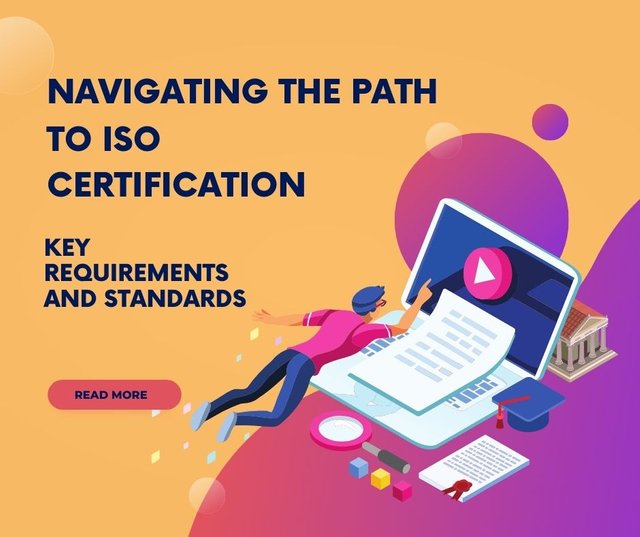Navigating the Path to ISO Certification: Key Requirements and Standards
Achieving ISO (International Organisation for Standardisation) certification is a significant milestone for any business. It signifies a commitment to excellence, quality, and adherence to globally recognised standards. To obtain ISO certification, companies must meet specific requirements outlined in the chosen ISO standard. In this article, we will explore the key requirements and standards that businesses must fulfill to achieve ISO certification.
Understanding ISO Standards
The first step in pursuing ISO certification is identifying the relevant standard for your industry or area of focus. There are various ISO standards, each tailored to specific aspects of business operations, such as quality management, environmental practices, information security, and more. Some of the most common ISO standards include ISO 9001 (Quality Management), ISO 14001 (Environmental Management), ISO 27001 (Information Security Management), and ISO 45001 (Occupational Health and Safety).
Documented Management System
All ISO certifications require the establishment and maintenance of a documented management system. This system serves as the framework for implementing processes, procedures, and policies that align with the chosen ISO standard. It should be accessible, understood, and followed by all relevant personnel within the organisation.
Leadership Commitment and Responsibility
Top management plays a pivotal role in the ISO certification process. They must demonstrate a clear commitment to meeting the requirements of the chosen standard and ensure that the necessary resources and support are provided. This commitment is vital in driving the implementation of the management system throughout the organisation.
Resource Allocation
Adequate resources, including personnel, time, and budget, must be allocated to support the implementation and maintenance of the management system. This ensures that the organisation has the capacity to meet the requirements of the chosen ISO standard effectively.
Competence and Training
Employees at all levels of the organisation must possess the necessary skills, knowledge, and competence to carry out their responsibilities in alignment with the ISO standard. Training programs and competency assessments should be established to ensure that employees are equipped to fulfill their roles effectively.
Process Approach
ISO standards emphasise a process approach to management. This involves identifying and managing interrelated processes within the organisation. By understanding how processes interact and affect one another, businesses can streamline operations and improve overall efficiency.
Monitoring and Measurement of Processes
ISO certification requires organisations to establish methods for monitoring, measuring, and analysing processes. This involves setting performance indicators, collecting data, and using it to evaluate the effectiveness of processes. The goal is to identify areas for improvement and ensure that processes are consistently meeting the requirements of the standard.
Internal Audits
Regular internal audits are a critical component of ISO certification. They involve conducting systematic assessments of the organisation's processes, procedures, and compliance with the chosen ISO standard. Internal auditors, typically trained personnel within the organisation, evaluate the effectiveness of the management system and identify areas for improvement.
Management Review
Top management must conduct regular reviews of the organisation's management system. This involves evaluating the system's effectiveness, identifying opportunities for improvement, and ensuring that it remains aligned with the chosen ISO standard. The management review process helps maintain the relevance and effectiveness of the management system over time.
Corrective and Preventive Actions
Organisations must establish processes for addressing non-conformities and taking corrective actions when deviations from the ISO standard occur. Additionally, preventive actions should be implemented to identify and address potential issues before they lead to non-conformities.
Conclusion
Achieving ISO certification requires a dedicated commitment to meeting the specific requirements outlined in the chosen ISO standard. By establishing a documented management system, demonstrating leadership commitment, allocating resources, and adopting a process-oriented approach, businesses pave the way for successful certification. Internal audits, ongoing monitoring, and management reviews ensure that the management system remains effective and aligned with the chosen standard. With these key requirements in place, businesses can navigate the path to ISO certification with confidence and reap the benefits of enhanced quality, efficiency, and compliance with internationally recognised standards.
